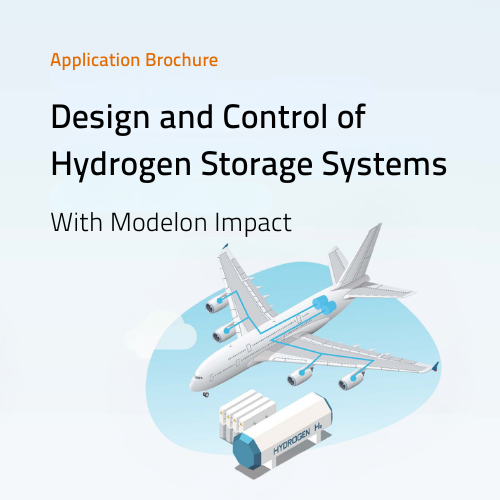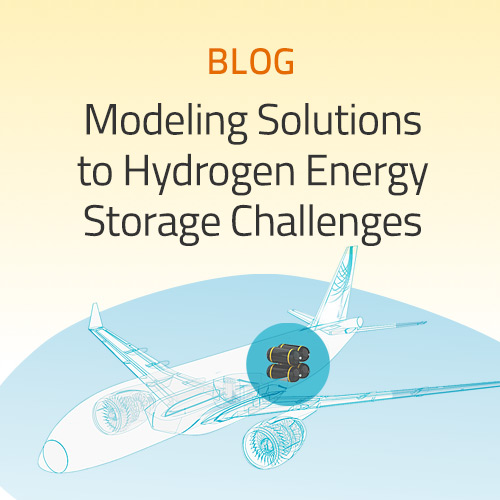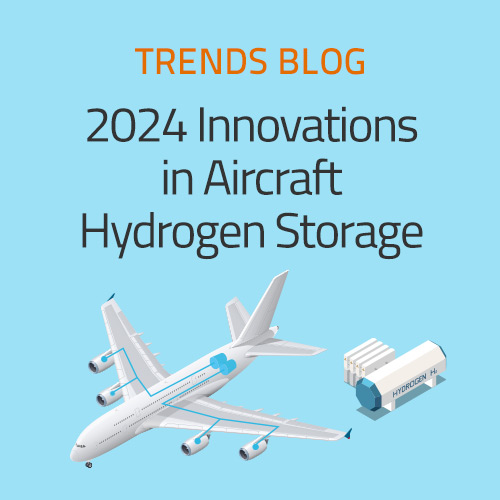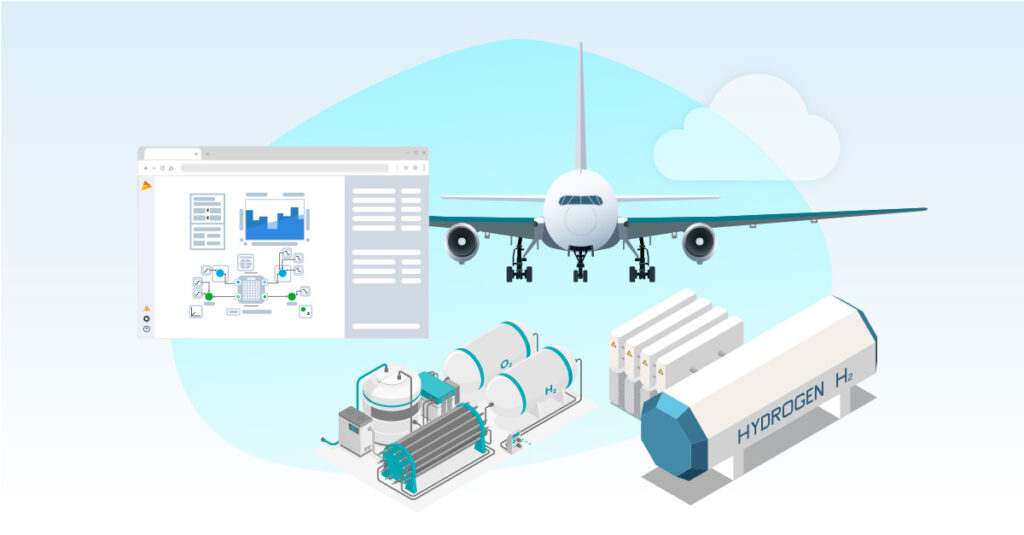
Hydrogen is abundant and vital to the decarbonized future of transportation and logistics. It isn’t just that hydrogen production can be “green,” powered by clean, renewable sources like wind and solar. Hydrogen-powered systems release fewer harmful emissions and significantly less CO2, even when burning hydrogen as a fuel.
In many respects, hydrogen is the ideal transportation energy source. Compared with hydrocarbon fuels, hydrogen has a higher auto-ignition temperature, meaning higher compression ratios and, thus, greater thermal efficiency. Additionally, hydrogen burns at a broader range of fuel-air mixtures than hydrocarbon fuels. Combustible hydrogen mixes range from 4 to 76 percent concentration in air—compared with gasoline’s relatively narrow range of 1.4 to 7.6 percent and methane’s 5 to 14.3 percent. This allows for lean hydrogen mixes that yield greater fuel economy with lower NOx emissions.
Significant obstacles stand between our world and the widespread deployment of hydrogen power in transportation. Hydrogen fuel cells are desireable, offering emissions-free energy, but mobile fuel cells need significant cost, performance, and efficiency optimization . Likewise, while hydrogen combustion is more straightforward than fuel cell technology, it has challenges.
In either case, we need better strategies for onboard hydrogen storage. Preventing boil-off and leakage while managing tank pressure and temperature is no small feat, especially while balancing performance, safety, weight, and cost.
Engineers need new, more comprehensive tools to solve these complex multi-domain design challenges.
Learn how Modelon helps aircraft manufacturers, tier one suppliers, and start-ups use model-based design and dynamic modeling to explore hydrogen energy and storage and find the solutions we need to move forward.
An Overview – Safe Hydrogen Storage for Propulsion
Hydrogen is especially promising to power transit via fuel cells or direct combustion, including cars, buses, and large aircraft. Fuel cell cost and performance are core challenges, but the primary concern is safe hydrogen storage, which plays a role in fuel cell-based and combustion-based hydrogen propulsion.
Hydrogen’s wide range of flammable fuel-air mixes and low minimum ignition energy of just 0.02 millijoules (seven percent of the energy needed to ignite natural gas) leave little room for error. Safety challenges are compounded by hydrogen’s low energy density (compared with fossil fuel sources, like natural gas), which means that any hydrogen-based propulsion system demands significant hydrogen storage.
Engineers using steady-state and dynamic physics-based models to design and assess hydrogen storage systems will have more accurate simulations, addressing constant and dynamic aspects of system behavior under real-world conditions. Accurate simulations lead to more reliable designs and greater confidence in deploying hydrogen storage systems.
Model-based design and simulation tools create opportunities to decrease development time and support best practices at every stage of the value chain.
For example, with a multi-fidelity digital twin, engineers can simulate their fuel cells and hydrogen storage tanks in a single model. They can “zoom in” to the component level, focusing on hydrogen storage materials and methods to explore design options and precisely size tanks. That same model can also capture the complex interaction of their propulsion system (be it a combustion engine or fuel cell) and hydrogen storage solution. Engineers and decision-makers can then explore the interaction of different aspects (air and fuel supply, water and heat management strategies, etc.) under unique operating conditions to see how these respond to different control and conditioning strategies.
Multi-fidelity physics-based modeling tools allow diverse teams to easily collaborate on various design and control approaches, finding the best balance of performance and cost over the broadest range of conditions.
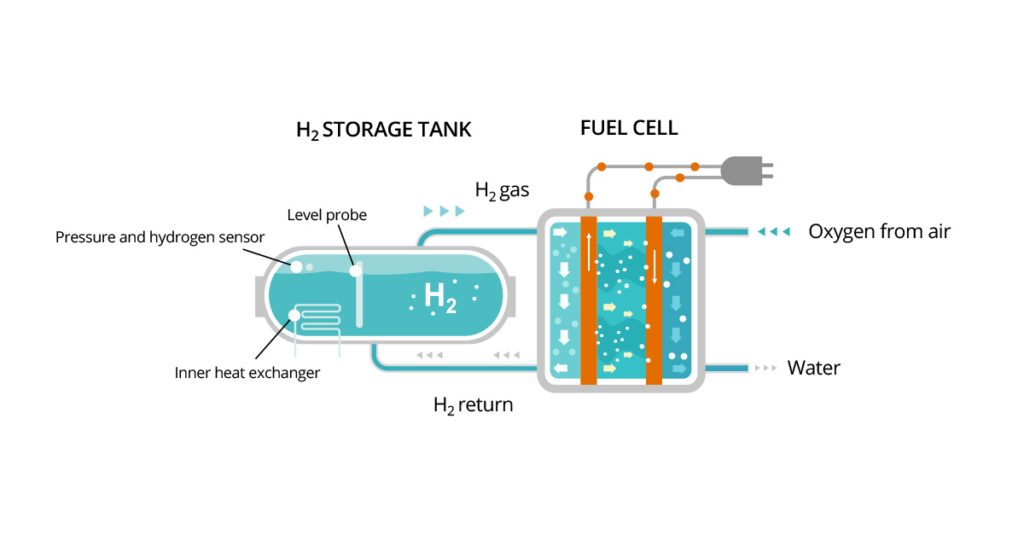
The Business Case – Model-based Design for Hydrogen Storage: Lower Costs and Improve the Efficiency
If hydrogen is essential to our future energy systems, then a broad range of on-board hydrogen storage tanks form the foundation. Right now, we need the foundation we need. Hydrogen combustion and propulsion are only workable with hydrogen storage tanks that can hold meaningful amounts of hydrogen while ensuring maximum storage time (dormancy) and minimal disruption or leakage risk. Tanks must balance performance, safety, weight, and cost. Developing safe, cost-effective, and efficient storage solutions that work in unpredictable operating conditions is crucial for the broader adoption of hydrogen as an energy source.
Current compact and efficient hydrogen storage methods include high-pressure tanks and cryo-compressed liquid storage systems. These tend to be expensive and pose safety risks. By adopting more comprehensive model-based design and system simulation tools, engineers can quickly assess the available options for hydrogen storage, integrate these into existing—and future—designs, and find better ways to implement these hydrogen storage solutions in the field today cost-effectively.
The Solution – Modelon Impact for Hydrogen Storage Technology for Aircraft Development
Modelon Impact is a cloud platform for designing, simulating, and analyzing physical systems using model-based design. Its extensive libraries and tools include a comprehensive suite of hydrogen energy, fuel cells, storage templates, models, tutorials, and customizable commercially validated components. These include Modelon’s Fuel Cell Library and Modelon’s Vapor Cycle Library to explore hydrogen propulsion for aircraft.
Modelon Impact is optimized for accessibility and easy onboarding, making it simple to collaborate across your entire organization (including non-specialists and those with limited engineering or programming experience). The included tutorials quickly introduce users to the basics and critical engineering metrics, and the platform itself relies on an easy-to-use workflow with proven graphic modeling features and experiment modes.
Modelon Impact runs exclusively on the cloud, so users don’t need to install versions, tie up local resources, or slow down their computer or network, even while running many simulations inside Impact. You can conveniently save and export any model’s design outputs as a single shareable file and use that as a component in other models or share it via a link. Any work you do using Modelon Impact is your property and remains confidential. You are free to share workspaces among your team, but this content is never accessed or used by Modelon for any purpose.
Modelon Impact and its embedded extended set of libraries support aircraft manufacturers, tier one suppliers, and start-ups with the tools they need to explore hydrogen propulsion and determine the optimal balance between hydrogen storage tank structure, insulation, weight, and dormancy. While the existing libraries are suitable for many hydrogen energy system simulations if your work demands further customization, our hydrogen storage and aerospace modeling experts are here to help you and your team.
Application Brochure
Modelon Impact for the Design and Control of Hydrogen Storage Systems
Video
Modelon Impact for Aicraft Hydrogen Storage
Library
Vapor Cycle Library
The Use Case – Forging Ahead with Modelon’s Solutions
To support the broader hydrogen propulsion deployment, aircraft manufacturers must design new tanks for compressed liquid hydrogen storage. These must balance performance and gravimetric efficiency. Accurately modeling such systems requires precise physics of complex systems and fluid properties to create representative data. Aerospace engineers are already using Modelon Impact’s experiment mode and computing engine to model preconfigured virtual tests, predicting the transient response of such tanks to various scenarios, ranging from in-flight consumption to the refilling process.
One key challenge is properly characterizing the interaction of these properties as liquid hydrogen is extracted from a rigid, insulated tank at varying rates during flight. These dynamic changes risk hydrogen leakage from the tank or allow ambient air in. Leakage poses clear ignition risks, but simulations show ambient air flowing into the tank will likely result in frozen fuel lines—which can be just as dangerous during flight.
Such work highlights the importance of Modelon Impact’s multi-fidelity modeling capabilities: while the sizing of hydrogen storage tanks is mostly a steady-state problem, constraints such as the dormancy or boil-off of liquid hydrogen rely on dynamic analysis. Modelon Impact leverages multi-fidelity models, allowing engineers to run both steady-state and dynamic simulations on the same model and find the optimal design with the least effort.
Resources
Introducing a new tool to your engineering stack can be daunting, so Modelon regularly releases easy-to-follow tutorials and guides on the Modelon Help Center. Our experts provide detailed support to keep your team moving forward.
Over the past two decades, we’ve distinguished ourselves by delivering exceptional service and expertise, earning a reputation as a trusted partner in many industries. Customer success is always our top priority.
Blog
Modeling Solutions to Hydrogen Energy Storage Challenges
Case Study
Pioneering Hydrogen-Powered Aviation with System Modeling and Simulation
Blog
Looking Ahead to Innovations in Aircraft Hydrogen Storage in 2024
Ready to make an impact with system simulation?
Get in touch today to see how Modelon Impact can help you with your system simulation and product design journey.
